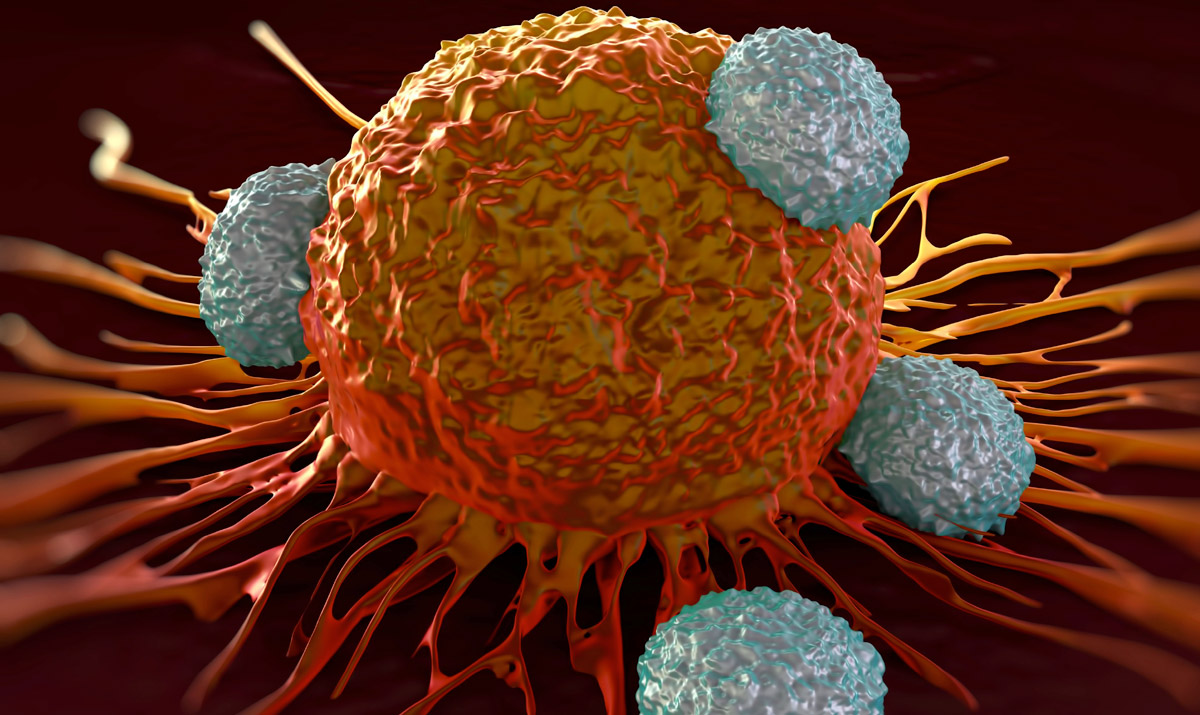New cancer vaccine finds way to overcome tumor defenses.
- Researchers have developed a
new vaccine that shows promise in overriding an immune escape mechanism in
cancerous tumors.
- They found that the vaccine
offers protection against cancerous tumors in mouse and primate cancer models.
- They plan to enter the
vaccine into clinical trials next year.
Developing cancer
vaccines have been an essential part Trusted
Source of cancer research for almost three decades.
Many forms Trusted
Source of cancer vaccines are under research, including those
that target proteins expressed across multiple cancer types, and those that
are personalized Trusted Source according to individual tumor mutations.
While existing vaccines can induce an
immune response in blood, tumors often dodge this response via an immune escape
mechanism.
Targeting this mechanism may help
researchers improve cancer vaccine efficacy.
In a recent study, researchers
developed a new cancer vaccine that targets this immune escape mechanism and
increases immune antibody levels.
The study was published in Nature Trusted
Source.
The new vaccine approach prevents the cancer cell from removing this cancer-specific protein and thus allows a coordinated immune attack on the cancer by both T- cells and natural killer (NK) cells,” he said. The researchers designed the new vaccine to target MICA and MICB stress proteins, which sit on the surface of cancer cells. While immune cells in the body, known as T cells and NK cells, typically bind to these stress proteins in an attempt to kill cancerous cells, tumor cells can evade their attack by slicing MICA/B and shedding them. The new vaccine prevents this slicing and thus increases stress protein expression and the activation of a dual attack from T cells and NK cells. To begin, the researchers administered their new vaccine to mouse models of cancer that were modified to express human MICA/B proteins. They found that the vaccines increased antibody levels in the mice, and demonstrated anti-tumor effects. The researchers then evaluated The researchers designed the new vaccine to target MICA and MICB stress proteins, which sit on the surface of cancer cells. While immune cells in The researchers designed the new vaccine to target MICA and MICB stress proteins, which sit on the surface of cancer cells. While immune cells in the body, known as T cells and NK cells, typically bind to these stress proteins in an attempt to kill cancerous cells, tumor cells can evade their attack by slicing MICA/B and shedding them. The new vaccine prevents this slicing and thus increases stress protein expression and the activation of a dual attack from T cells and NK cells. To begin, the researchers administered their new vaccine to mouse models of cancer that were modified to express human MICA/B proteins. They found that the vaccines increased antibody levels in the mice, and demonstrated anti-tumor effects. The researchers then evaluated The researchers designed the new vaccine to target MICA and MICB stress proteins, which sit on the surface of cancer cells. While immune cells inThe researchers designed the new vaccine to target MICA and MICB stress proteins, which sit on the surface of cancer cells. While immune cells in the body, known as T cells and NK cells, typically bind to these stress proteins in an attempt to kill cancerous cells, tumor cells can evade their attack by slicing MICA/B and shedding them. The new vaccine prevents this slicing and thus increases stress protein expression and the activation of a dual attack from T cells and NK cells. To begin, the researchers administered their new vaccine to mouse models of cancer that were modified to express human MICA/B proteins. They found that the vaccines increased antibody levels in the mice, and demonstrated anti-tumor effects. The researchers then evaluated
While immune cells in the body, known as T cells and NK cells, typically bind to these stress proteins in an attempt to kill cancerous cells, tumor cells can evade their attack by slicing MICA/B and shedding them.
The new vaccine prevents this slicing and thus increases stress protein expression and the activation of a dual attack from T cells and NK cells.
To begin, the researchers administered their new vaccine to mouse models of cancer that were modified to express human MICA/B proteins.
They found that the vaccines increased antibody levels in the mice, and demonstrated anti-tumor effects.
The researchers then evaluated immunological memory from the vaccine. Four months after initial immunization, the researchers exposed mice to tumor cells and found that they remained fully protected.
The researchers also found that introducing small quantities of blood from vaccinated mice inhibited cell-surface MICA/B protein shedding on human and mouse cancer cell lines.
The researchers further noted that the vaccine was effective in controlling multiple tumor types.
The researchers next investigated whether the vaccine could prevent cancer recurrence following surgical tumor removal.
To do so, they immunized mouse models of breast cancer and melanoma with a high chance of recurrence after tumor removal with either the new vaccine or a control vaccine.
While immune cells in the body, known as T cells
and NK cells, typically bind to these stress proteins in an attempt to kill
cancerous cells, tumor cells can evade their attack by slicing MICA/B and
shedding them.
The new vaccine prevents this slicing and thus
increases stress protein expression and the activation of a dual attack from T
cells and NK cells.
To begin, the researchers
administered their new vaccine to mouse models of cancer that were modified to
express human MICA/B proteins.
They found that the vaccines
increased antibody levels in the mice, and demonstrated anti-tumor effects.
The researchers then evaluated
immunological memory from the vaccine. Four months after initial immunization,
the researchers exposed mice to tumor cells and found that they remained fully
protected.
The researchers also found that
introducing small quantities of blood from vaccinated mice inhibited
cell-surface MICA/B protein shedding on human and mouse cancer cell lines.
The researchers further noted that
the vaccine was effective in controlling multiple tumor types.
The researchers next investigated
whether the vaccine could prevent cancer recurrence following surgical tumor removal.
To do so, they immunized mouse models
of breast cancer and melanoma with a high chance of recurrence after tumor removal with either the new vaccine or a control vaccine.
They found that, compared to the
control vaccine, the new vaccine reduced the number of lung metastases detected
in both cancer models more than a month after surgery.
The researchers next tested the
vaccine on four rhesus macaques (commonly known as rhesus monkeys). They noted
that the vaccine increased antibody levels by 100- 1,000 fold with subsequent
booster vaccines.
They reported no clinical side
effects or changes in blood chemistry following immunization, which, they
wrote, suggests preliminary evidence for vaccine safety.
The researchers concluded that their
new vaccine enables protective immunity against tumors with common escape
mutations.
The researchers noted that their
results might be limited as they had to express human MICA/B proteins in mouse tumor cells due to differences in mouse and human cellular biology.
When asked what the future holds for
research around the vaccine, Dr. Kai W. Wucherpfennig,
chair of cancer immunology and virology at the Dana-Farber Cancer Institute and
lead author of the study, told MNT that they plan to enter the
vaccine into clinical trials next year.
The researchers added that the
vaccine might also be used in combination with local radiation therapy as DNA
damage enhances MICA/B expression by cancer cells.
“Since this is a broad target to general
cancer stress signal, the vaccine may have broad applicability to many cancers
and thus could be made to be an off-the-shelf approach,” Dr. Kesari added.
Although the study presents an
exciting new approach to cancer vaccines, the results remain preclinical, noted
Dr. Kesari.
“[Thus it] will need to be translated
in the future in humans by conducting phase I clinical trials in the future to
prove out its safety and efficacy,” he concluded.
Top of
Form
Share on Pinterest


